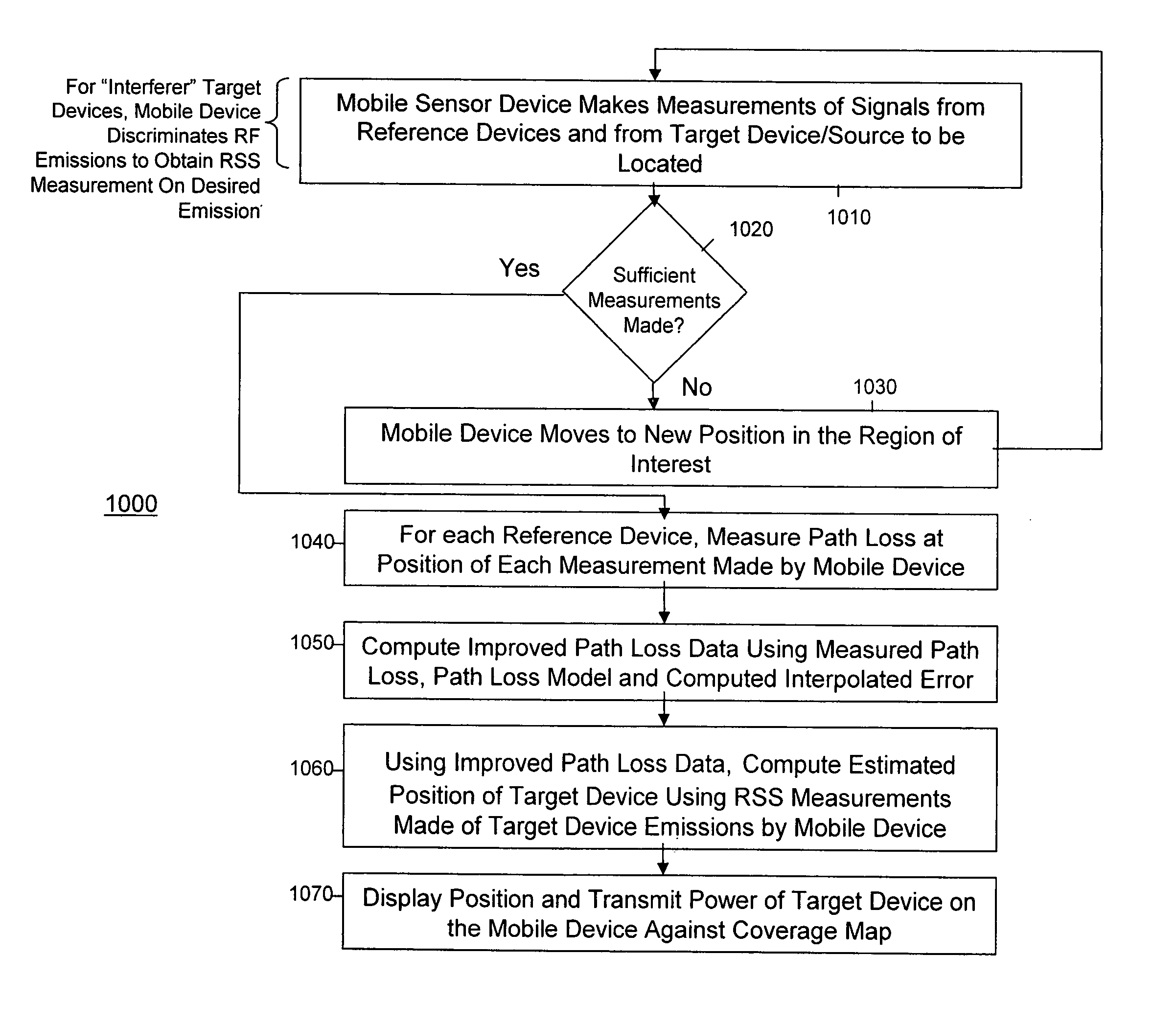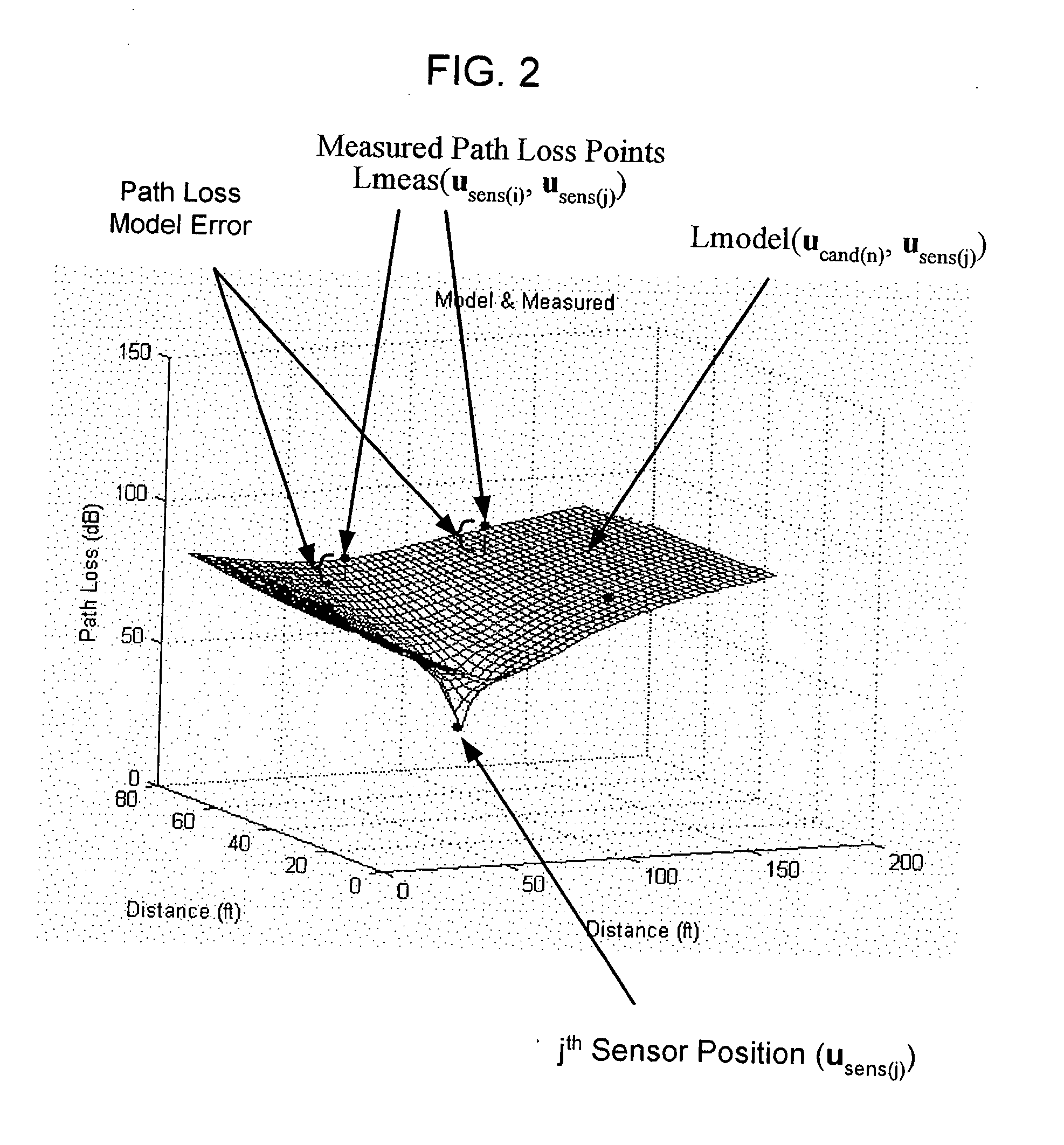Self-calibrated path loss position estimation and zone of impact determination
- Summary
- Abstract
- Description
- Claims
- Application Information
AI Technical Summary
Benefits of technology
Problems solved by technology
Method used
Image
Examples
Embodiment Construction
[0025] The position / location estimation system and method described herein uses received signal strength (RSS) of the signal emitted by the device to be located (target device) and does not require the aforementioned laborious offline calibration or imported coverage maps. The algorithm may be implemented in two phases, an offline phase for sensor self-calibration, and an online phase for real-time position estimation.
[0026] The System in General
[0027] With reference to FIG. 1, a system 10 is shown comprising a plurality of radio sensor devices (sensors) 200, 210, 220 and 230 and a server computer 400. The sensors are deployed at known positions. Sensors can both transmit and receive signals from each other and receive signals from the device to be located, called a target device 100. For example, sensor 200 is at position usens1, sensor 210 is at position usens2, sensor 220 is at position usens3 and sensor 230 is at position usens4. An example of a sensor is described hereinafter...
PUM
 Login to View More
Login to View More Abstract
Description
Claims
Application Information
 Login to View More
Login to View More - R&D
- Intellectual Property
- Life Sciences
- Materials
- Tech Scout
- Unparalleled Data Quality
- Higher Quality Content
- 60% Fewer Hallucinations
Browse by: Latest US Patents, China's latest patents, Technical Efficacy Thesaurus, Application Domain, Technology Topic, Popular Technical Reports.
© 2025 PatSnap. All rights reserved.Legal|Privacy policy|Modern Slavery Act Transparency Statement|Sitemap|About US| Contact US: help@patsnap.com



